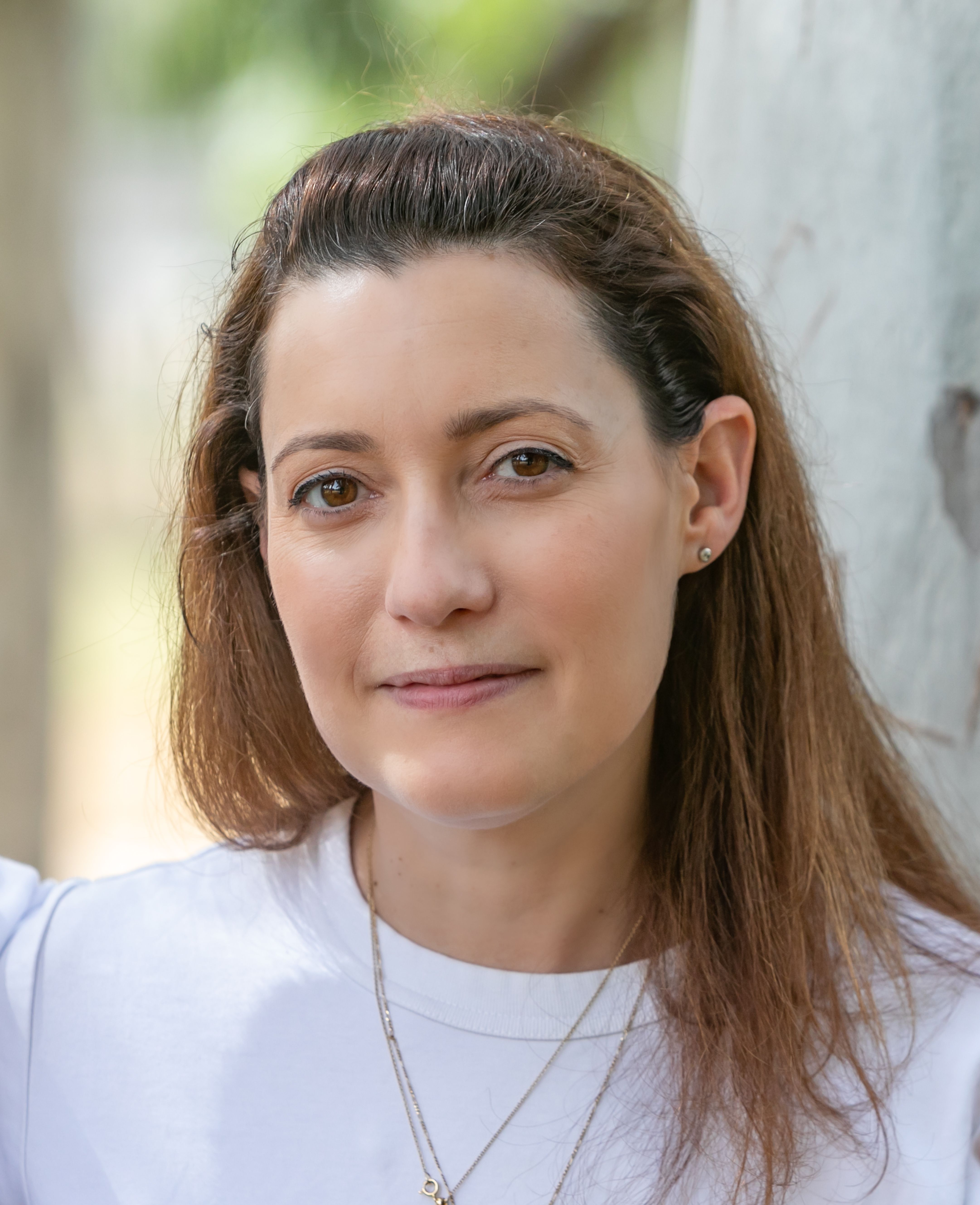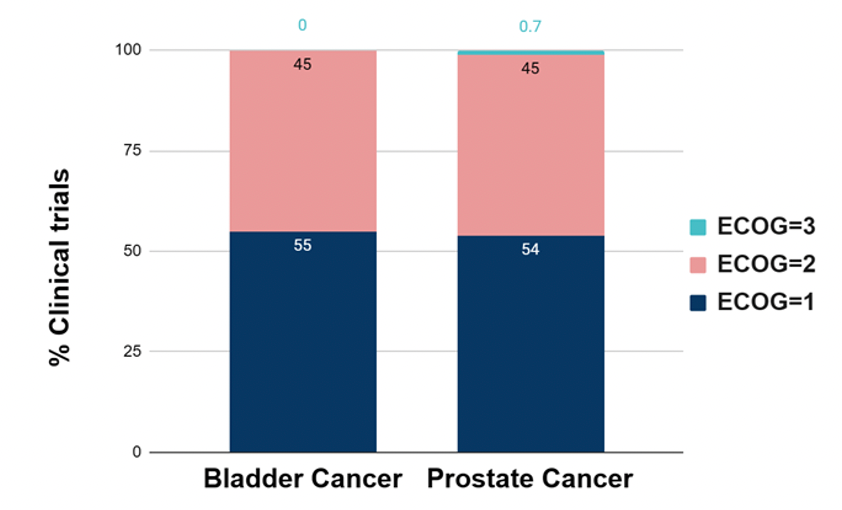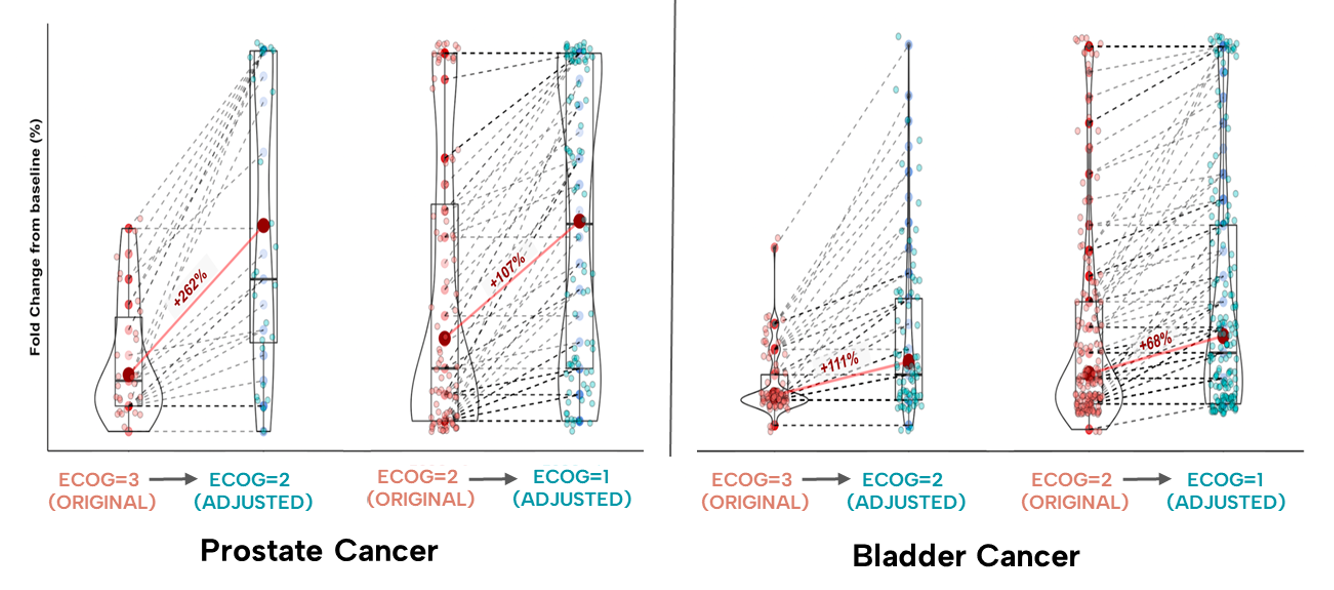Rethinking ECOG Scores to Improve Patient Access and Clinical Trials Eligibility
Recent study results highlight need for new metrics in ECOG scoring to mitigate variability.

Recruiting cancer patients for clinical trials is challenging due to lack of awareness, geographical and socioeconomic limitations, and strict eligibility criteria. As it relates to eligibility criteria, one of the most commonly used is the Eastern Cooperative Oncology Group (ECOG) performance status (PS), which was developed and published in 1982 by the Eastern Cooperative Oncology Group.1
ECOG score is based mainly on the physician's evaluation of the patient’s level of activity and general health. The scoring system ranges from 0 to 5, with 0 indicating full activity and 5 indicating death. It was originally developed from the Karnofsky Performance Status (KPS), which uses a percentage-based scale from 0 to 100. ECOG PS is a more simplified and practical version, as it condenses the percentage based KPS into five short categories. Nevertheless, KPS is still commonly used for some cancer types such as Glioblastoma Multiforme (GBM).
Cancer-specific performance status scales, such as the Lansky Play-Performance Scale (LPPS) are often used to determine a child's performance status for cancer clinical trial eligibility. In addition, the Myeloma frailty score calculator was developed specifically for elderly myeloma patients and incorporates disease-specific characteristics.
Many clinical trials are designed for patients with advanced cancer who have received standard-of-care treatment. These patients are typically older due to rising life expectancy and may have age-related medical conditions that worsen their PS, in addition to the cumulative effects of previous treatments for their disease or other comorbidities.2
Leal Health is an AI-based platform that matches cancer patients to clinical trials. Leal offers patients immediate access to advanced cancer therapies in the clinic and enables biopharma companies to develop patient-centric clinical trials. The platform is built upon a distinctive structured clinical trial database and utilizes patient-reported clinical profiles to effectively match patients to clinical trials and analyze real-world patient populations.
In the Leal Genitourinary (GU) clinical trials (prostate and bladder cancers) database, the maximal ECOG score allowed is distributed relatively evenly between an ECOG=1 restricted only in physically strenuous activities) and an ECOG=2 (unable to carry out any work activities) (Figure 1).
Figure 1. The Distribution of Maximum ECOG Score Allowed in Eligibility Criteria of Bladder and Prostate Clinical Trials
Source: Leal Health database

Unfortunately, patients who signed up for the Leal platform have limited clinical trial options due to their poor PS. Reported PS of ECOG 2 removes about 50% of viable options, while a score of ECOG3 practically abolishes all trial options for patients (Figure 1). This leads to a lack of reliable assessment of usage, benefits, harms and outcomes for these patients, who represent actual users, after regulatory approval.3,4 For example, Johnson et al. highlighted the challenges of missing data on activity and treatment safety with immune checkpoint inhibitors in underrepresented populations in clinical trials.5
A recent analysis, presented at the American Society of Clinical Oncology GU Cancers Symposium,6 showed the negative impact of strict ECOG score requirement on cancer patients’ odds of being eligible for a clinical trial. Improving the ECOG score of GU cancer patients’ profiles in the Leal platform resulted in a significant and consistent increase in the number of matched trials, independent of gender, age and disease stage (Figure 2). This strong association shows that the ECOG score is a significant barrier within a proactive population who seeks clinical trials.
Figure 2. A non-parametric pairwise analysis resulted in a significant and consistent increase in the number of matched trials for Prostate and Bladder Cancer among patients with an ECOG score of 3 (262% and 111% increase, when ECOG3 was edited to ECOG=2, Yuen-Welch p<0.001) and patients with an ECOG score of 2 (107% and 68% increase respectively, when ECOG=2 was edited to ECOG=1, Yuen-Welch p<0.001)
Source: Gortzak-Uzan L, et al. Journal of Clinical Oncology 2023 41:6_suppl, 78-78

PS-related gaps and barriers hindering enrollment
1. PS is a subjective generalized score that is prone to bias and error:
ECOG PS is largely based on personal judgment, which can lead to interpretation bias. The subjective nature of the verbal scoring definitions, such as "physically strenuous activity/work activities," can be interpreted differently by individuals. Cancer treatment commonly causes temporary physical and mental symptoms that can affect a patient's well-being and ability to carry out daily activities, resulting in a lower PS score and, therefore, limited clinical trial options.
Reports show conflicting data on ECOG PS measurements due to the subjective and fluctuating nature of the score, with discrepancies arising from the different healthcare providers (clinical oncologist, medical officer, nurse) and patients themselves.7,8
Another common error is related to patients who may experience a decline in PS due to comorbidities or pre-existing medical conditions. For example, patients with a history of heart conditions may have their ECOG PS modified to account for the impact of this condition on their functional status. However, the functional status of such patients may improve over time with appropriate medical management. Furthermore, not all tested drugs are related to heart conditions, and using a strict PS for such a patient will not necessarily impact the safety or benefits the patient can gain from the clinical trial.
What can be done?
To increase precision: In lieu of the current limited scoring system, there is a need to create a more precise scale that can be used for objective functioning tests. The scale should include detailed physical and mental parameters and measurements that can be performed by the patient's healthcare provider or as part of the study's screening process. The assessments needed to determine PS should be tailored to the type of trial, the investigated intervention, and the clinical rationale. For example, for an oral treatment taken at home with minimal follow-ups and testing, the physical component of the score should carry less weight in the general scoring, increasing the chances of meeting eligibility criteria for those kinds of clinical trials.
To maintain objectivity: In order to make the subjective characteristics of ECOG PS parameters more objective and quantitative, one possible approach could be to use wearable technology, such as activity monitors or accelerometers, to track the patient's physical activity levels.6,7,8 Another approach could be to use standardized tests or assessments to evaluate specific aspects of a patient's functional status, such as mobility, balance or endurance. These tests could be used to assign objective scores that correspond to the ECOG performance status categories.9
Real-world patients
There are problems with clinical trials using the PS threshold because it does not reflect real-world patients. First, it is restrictive without always having a strong clinical rationale and reports show that PS threshold used in clinical trials may exclude patients who are capable of tolerating treatment and benefiting from it. For example, in a large cancer patient survey, Unger JM et al demonstrated that the presence of comorbidities adversely significantly affects the number of cases of trial discussions, trial offers and trial participation.10 Another research meta-analysis was used to define and quantify domains of clinical trial barriers and showed that for more than three out of four cancer patients, trial participation is unachievable.11 Malik et al.12 analyzed 145 non-restrictive (NRP) and 86 restrictive (RP) Phase I clinical trial protocols with diverse eligibility criteria. ECOG score ≤1 was found to be the most common reason for restrictive trial protocols. NRP protocols had a significantly shorter median accrual time, lower screening failure, and lower premature closure rate than RPs.
In addition, using PS thresholds may result in the exclusion of minorities and underrepresented populations. Health disparities exist between different racial groups but are not caused by race itself. Instead, social and economic factors associated with race, such as discrimination, poverty and limited access to healthcare, play a significant role in these disparities.13,14,15 Research has shown that members of racial and ethnic minority groups are more likely to experience a range of health problems compared to their white counterparts.
What can be done?
Recruiting patients with a high ECOG PS can be accomplished through dedicated cohorts of specific populations. Ready, Neal E. et al. recently published16 the results from the CheckMate 817 study with patient subgroups that are frequently excluded from Phase III randomized trials: those with ECOG PS 2 or ECOG PS 0–1 plus other comorbidities. The study showed that the study drug was associated with manageable safety and durable efficacy in both cohorts. The American Society of Clinical Oncology (ASCO) and Friends of Cancer Research (Friends) working groups have proposed a new cancer clinical trial model in which patients will be eligible for a trial by default, with only specific scientific rationale limitations excluding patients.17 ASCO-Friends recommended that patients with ECOG PS > 2 should be included in clinical trials unless there are scientific safety limitations. Furthermore, the ECOG PS eligibility criteria should resemble real-life patients who intend to receive the study drug in the future, and the PS should be frequently evaluated during the study.
Sponsors and researchers will soon be required to submit a plan for ensuring diversity to improve enrollment of underrepresented populations in their clinical trials, as requested by new US Congress law18 that supported the FDA’s diversity plans.19 Implementing this agenda may require relaxing the strict PS inclusion criteria that are predominant in cancer trial design today.
Downstream effects on design and operations
Introducing a better-suited PS scale will require clinical and operational changes and adaptations.
Trial logistics. Trials that enroll patients with higher levels of disability may require additional logistical support, such as transportation to the trial site or caregiver support during treatment visits. Additional study staff in general or specialist physicians in case of special populations (geriatricians for example) may also be needed. While most clinical trial sites already meet most of those prerequisites, there may be a need to establish them as part of the site selection process and training.
Trial design. The inclusion of patients with poor PS may impact endpoint selection for the study to better reflect the treatment benefit for this population. For example, aside from the traditional outcome measures of overall progression-free survival, endpoints that measure quality of life, symptom control or functional status may be more relevant. On the operational side of things, there may be a need to integrate more frequent visits for closer monitoring.
Costs. Modifying trial design and logistics to accommodate patients with a poor PS score may result in increased expenses. Nevertheless, the expenses associated with implementing these modifications could be counterbalanced by the considerably larger pool of potential participants who are currently excluded from many clinical trials.
In addition to the increased incurred cost, there is a concern that the inclusion of patients with low ECOG scores will result in poorer outcomes, including reduced progression-free survival, a primary endpoint for many cancer trials.20,21
Despite all of these concerns, the data gathered from the Leal platform and other recent studies highlight the necessity of integrating new objective metrics and standardized evaluations into the ECOG scoring system to mitigate variability and enhance the reliability of the PS score. This would result in more precise assessments of a patient's functional capacity, potentially benefiting both patients and sponsors. For patients, this could increase their treatment options and provide access to cutting-edge investigational therapies, only available through clinical trials. For sponsors, this could enlarge the number of participants and ensure that the clinical trial population is representative of real-world patients and that the clinical benefit observed in the trial will hold up after approval. Incorporating a more sophisticated tool and accommodating sicker or more disabled patients in clinical trials may necessitate significant logistical, clinical and operational adjustments. However, the anticipated benefits for cancer patients and the clinical research community are invaluable.
Liat Edry Botzer, PhD, Medical Director; Yelena Lapidot, PhD, RD, Medical Director, and Avigail Rein, MD, PhD, Medical Director, Avital Gaziel, PhD; Chief Science Officer, all with Leal Health
References
- Oken MM, Creech RH, Tormey DC, et al. Toxicity and response criteria of the Eastern Cooperative Oncology Group. Am J Clin Oncol. 1982;5(6):649-655.
- Hurria A, Levit LA, Dale W, et al. Improving the Evidence Base for Treating Older Adults With Cancer: American Society of Clinical Oncology Statement. J Clin Oncol. 2015;33(32):3826-3833. doi:10.1200/JCO.2015.63.0319
- Abbasi J. Older Patients (Still) Left Out of Cancer Clinical Trials. JAMA. 2019;322(18):1751-1753. doi:10.1001/jama.2019.17016
- DiBonaventura MD, Wong W, Shah-Manek B, Schulz M. Real-world usage and clinical outcomes of alectinib among post-crizotinib progression anaplastic lymphoma kinase positive non-small-cell lung cancer patients in the USA. Onco Targets Ther. 2017;11:75-82. Published 2017 Dec 22. doi:10.2147/OTT.S144960
- Johnson DB, Sullivan RJ, Menzies AM. Immune checkpoint inhibitors in challenging populations. Cancer. 2017;123(11):1904-1911. doi:10.1002/cncr.30642.
- Gortzak-Uzan L, Lapidot L, Bader T and Gaziel A ECOG score as a barrier for clinical trial eligibility in the patient population with genitourinary cancer: Is it time to adapt this criterion to real-world data? Journal of Clinical Oncology 2023 41:6_suppl, 78-78
- Kelly CM, Shahrokni A. Moving beyond Karnofsky and ECOG Performance Status Assessments with New Technologies. J Oncol. 2016;2016:6186543. doi:10.1155/2016/6186543.
- Higgins MI, Master VA. Who really knows the performance status: The physician or the patient?. Cancer. 2021;127(3):339-341. doi:10.1002/cncr.33236.
- Sok M, Zavrl M, Greif B, Srpčič M. Objective assessment of WHO/ECOG performance status. Support Care Cancer. 2019;27(10):3793-3798. doi:10.1007/s00520-018-4597-z.
- Unger JM, Hershman DL, Fleury ME, Vaidya R. Association of Patient Comorbid Conditions With Cancer Clinical Trial Participation [published correction appears in JAMA Oncol. 2019 Feb 14;:]. JAMA Oncol. 2019;5(3):326-333. doi:10.1001/jamaoncol.2018.5953.
- Unger JM, Vaidya R, Hershman DL, Minasian LM, Fleury ME. Systematic Review and Meta-Analysis of the Magnitude of Structural, Clinical, and Physician and Patient Barriers to Cancer Clinical Trial Participation. J Natl Cancer Inst. 2019;111(3):245-255. doi:10.1093/jnci/djy221
- Malik L, Lu D. Eligibility criteria for phase I clinical trials: tight vs loose?. Cancer Chemother Pharmacol. 2019;83(5):999-1002. doi:10.1007/s00280-019-03801-w.
- How We Got Here: The Legacy of Anti-Black Discrimination in Radiology. Julia E. Goldberg, Vinay Prabhu, Paul N. Smereka, and Nicole M. Hindman. RadioGraphics 2023 43:2
- Eden CM, Johnson J, Syrnioti G, Malik M, Ju T. The Landmark Series: The Breast Cancer Burden of the Asian American Population and the Need for Disaggregated Data. Ann Surg Oncol. 2023;30(4):2121-2127. doi:10.1245/s10434-023-13103-4
- Karanth S, Fowler ME, Mao X, et al. Race, Socioeconomic Status, and Health-Care Access Disparities in Ovarian Cancer Treatment and Mortality: Systematic Review and Meta-Analysis. JNCI Cancer Spectr. 2019;3(4):pkz084. Published 2019 Oct 9. doi:10.1093/jncics/pkz084
- Ready NE, Audigier-Valette C, Goldman JW, et al. First-line nivolumab plus ipilimumab for metastatic non-small cell lung cancer, including patients with ECOG performance status 2 and other special populations: CheckMate 817. J Immunother Cancer. 2023;11(2):e006127. doi:10.1136/jitc-2022-006127.
- Kim ES, Uldrick TS, Schenkel C, et al. Continuing to Broaden Eligibility Criteria to Make Clinical Trials More Representative and Inclusive: ASCO-Friends of Cancer Research Joint Research Statement. Clin Cancer Res. 2021;27(9):2394-2399. doi:10.1158/1078-0432.CCR-20-3852
- The omnibus spending bill enacted; 2023, available from: Public Law 117-328
- The Food and Drug Administration (FDA) diversity plans; 2022, available from: https://aboutblaw.com/6o1
- Magnuson A, Bruinooge SS, Singh H, et al. Modernizing Clinical Trial Eligibility Criteria: Recommendations of the ASCO-Friends of Cancer Research Performance Status Work Group. Clin Cancer Res. 2021;27(9):2424-2429. doi:10.1158/1078-0432.CCR-20-3868
- Sehgal K, Gill RR, Widick P, et al. Association of Performance Status With Survival in Patients With Advanced Non-Small Cell Lung Cancer Treated With Pembrolizumab Monotherapy. JAMA Netw Open. 2021;4(2):e2037120. Published 2021 Feb 1. doi:10.1001/jamanetworkopen.2020.37120
Moving Towards Decentralized Elements: Q&A with Scott Palmese, Worldwide Clinical Trials
December 6th 2024Palmese, executive director, site relationships and DCT solutions, discusses the practice of incorporating decentralized elements in a study rather than planning a decentralized trial from the start.